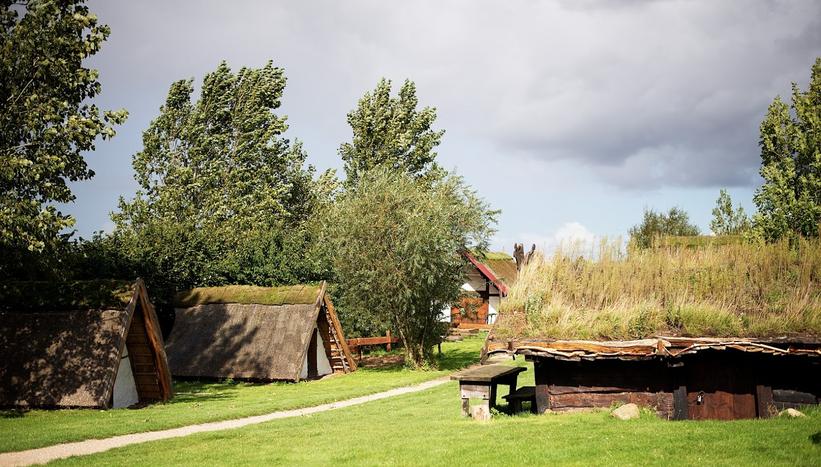
Reconstructions in the Viking village "Slagløse"
In the Viking village, you will find a selection of reconstructed smaller house types from Viking villages. There was no village at Trelleborg during the Viking Age, where only traces of the ring fortress have been found. The selection of buildings shows how a smaller village might have looked. The village serves as the setting for the museum's education and outreach activities for families.
The first house on the left in the Viking village is the "Hewing house", which functions as a woodworking workshop. The house is based on drawings of open longhouses where ships could have been wintered. The house provides a backdrop for working with wood, including woodturning and carving activities.
There are two pit houses of a type found at Trelleborg. The houses are A-shaped, partially sunken, and have roofs that go all the way to the ground. Pit houses were used as workshops, and artifacts such as loom weights for Viking warp-weighted looms and traces of blacksmithing have been found in this type of house.
The blacksmith's forge and the activity area in front of it are the focal points for the museum's public activities. Here, you can bake flatbread, paint with Viking colors, carve runes, or play wild games in the play area called Udgard. The forge is partially clay-lined and partially built with horizontally laid planks, with a thatched roof, representing a slightly later type of forge. The inhabitable part, with sleeping benches and a hearth, provides a setting for an active Viking life on weekends and holidays.
The Hedeby House, the largest house in the village located at the back right of the museum, is a reconstruction of a townhouse from Hedeby, situated near the Danish-German border. The house is constructed of woven wickerwork with clay lining, as well as a single wall made of overlapping timbers, and has a thatched roof. The house consists of three rooms, with sleeping benches and a fireplace in the middle room. The east-facing room features a fine wooden floor, suggesting it may have been a trading house for storing goods. The house is often inhabited by Vikings on weekends and holidays and serves as a setting for the museum's outreach.
The oldest house in the village, the first house on the right, is a reconstruction of a house from Uldal in northern Jutland. The house is partially buried and built with sturdy logs and a grass roof. It has a sleeping bench and is frequently inhabited by Vikings on weekends and holidays.